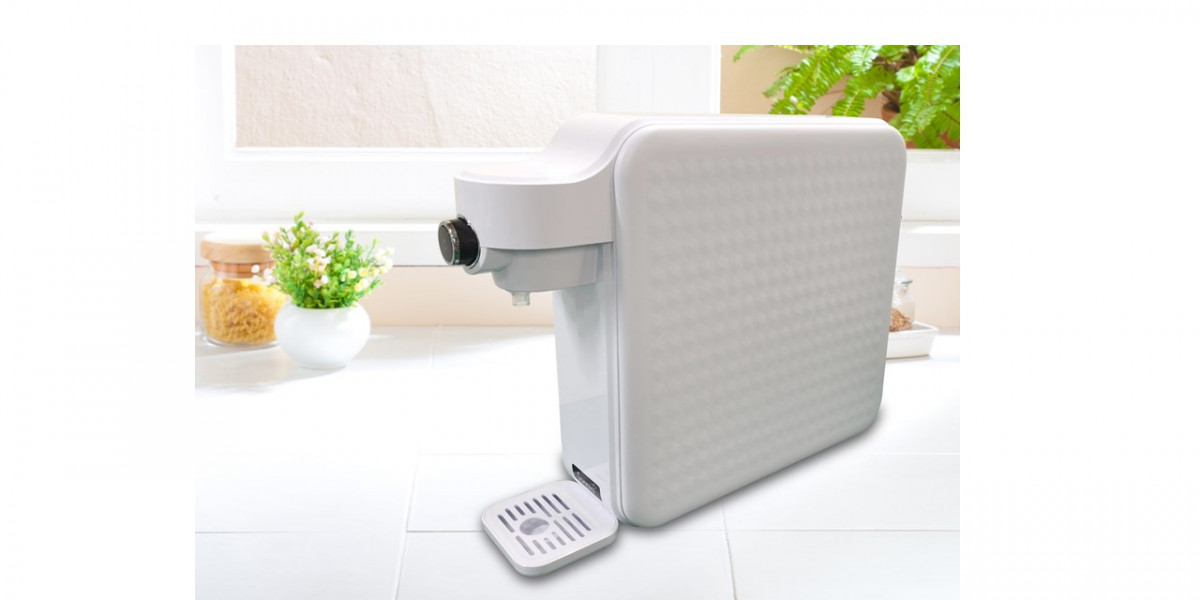Ensuring access to clean and safe drinking water is a fundamental concern in today's society. Drinking water filter has become an essential tool in this endeavor, offering a reliable method to remove impurities and enhance water quality. From harmful contaminants to unpleasant tastes and odours, water filters address a wide range of issues, making your water safer and more enjoyable to drink. These devices come in various types, each suited to different needs and preferences, such as removing specific contaminants or fitting particular household setups. The right water filter not only improves the safety and taste of your water but also contributes to better overall health.
Types of Drinking Water-Filters
There are several types of drinking water-filters available, each with unique features and benefits. Common options include activated carbon filters, reverse osmosis systems, ultraviolet (UV) purifiers, and ceramic filters. Activated carbon filters are effective at removing chlorine and organic compounds, making them a popular and cost-effective choice for improving water quality and taste.
Reverse osmosis systems provide comprehensive filtration by forcing water through a semi-permeable membrane, removing heavy metals and dissolved salts. UV purifiers use ultraviolet light to kill bacteria and viruses, ensuring microbiologically safe water. Ceramic filters, known for their longevity, effectively remove larger particles and some microorganisms. When selecting a filter, consider both the effectiveness and cost to suit your specific needs.
How Water Filters Work?
Water filters function through filtration, adsorption, and sometimes chemical reactions to remove contaminants from drinking water. The process typically begins as water flows through a pre-filter, which captures larger particles such as sediment and rust. Following this initial stage, water moves into a more specialised filter medium. Activated carbon filters rely on adsorption, a process where impurities are trapped on the surface of the carbon particles.
Reverse osmosis systems, on the other hand, force water through a semi-permeable membrane, blocking particles larger than water molecules, including many dissolved salts and heavy metals. Ultraviolet (UV) purifiers employ UV light to deactivate harmful microorganisms, ensuring microbiologically safe water. In addition, ceramic filters utilize a porous structure to remove bacteria and other particles. Each type of filter is designed to target specific contaminants, and understanding these mechanisms can help you choose the most suitable system for your needs.
Health Benefits of Filtered Water
Filtered water offers substantial health benefits by significantly reducing the presence of harmful substances, including lead, chlorine, and pathogens. These contaminants can pose serious health risks, ranging from gastrointestinal illnesses to long-term chronic conditions. By eliminating these impurities, water filters provide a safer drinking experience, free from potentially harmful chemicals and microorganisms.
Filtered water also tends to have a more appealing taste and odour, which encourages regular hydration. Adequate hydration is crucial for maintaining bodily functions, including digestion, circulation, and temperature regulation. Furthermore, consuming cleaner water can lead to better skin health, as it minimizes exposure to harsh chemicals that can cause dryness and irritation. Enhanced water quality supports overall wellness, making it a crucial consideration for anyone seeking to improve their health through improved hydration.
Environmental Impact
Water filters significantly reduce the environmental impact associated with bottled water consumption. The production and disposal of plastic bottles contribute to pollution and deplete natural resources. By opting for a home filtration system, you can minimize your carbon footprint and decrease the amount of plastic waste generated. Additionally, many modern filters are designed with sustainability in mind, featuring replaceable and recyclable components.
Some manufacturers even offer recycling programmers for used filters, further reducing environmental impact. By choosing a water filter over bottled water, you also help lower the demand for plastic production, which in turn reduces greenhouse gas emissions associated with manufacturing and transportation. This simple switch can have a profound effect on reducing your household's overall environmental impact, promoting a more sustainable lifestyle.
Choosing the Right Water Purifier Filter
Selecting the right water purifier filter involves assessing various factors to ensure it meets your specific needs. Start by evaluating your local water quality. You can obtain a water quality report from your local water supplier or use a home testing kit to identify prevalent contaminants in your water. This step will help you determine which impurities need to be addressed, such as heavy metals, chlorine, bacteria, or organic compounds.
Consider the filter's capacity and lifespan. Some filters require frequent replacement, while others, such as ceramic filters, offer longer durability. Assess the ease of installation and maintenance, as some systems may require professional installation, while others are designed for a simple DIY setup. Additionally, think about the available space in your home. Countertop models are convenient but require counter space, whereas under-sink systems are more discreet but need installation.
Examine the cost, not only of the initial purchase but also of replacement filters and maintenance. Some advanced filtration systems may have higher upfront costs but prove economical in the long run due to lower maintenance requirements. Check for certification marks from reputable organizations like NSF International or the Water Quality Association to ensure the filter meets safety and quality standards. By considering these aspects, you can make an informed decision that best suits your household's water purification needs.
Installation and Maintenance
Proper installation and consistent maintenance are key to ensuring the longevity and effectiveness of your water filter system. When setting up the filter, closely follow the manufacturer’s instructions to avoid any potential issues such as leaks or improper functioning. For some systems, professional installation might be advisable, especially if the setup is complex or involves plumbing modifications.
Maintenance primarily involves the timely replacement of filter cartridges. The frequency of replacements depends on the specific filter type and the amount of water processed. Many filters come with indicators or reminders to prompt you when a replacement is due. Besides changing the cartridges, regularly clean any pre-filters or additional components to prevent clogging and maintain optimal flow rates.
For UV purifiers, periodic checks of the UV lamp are necessary to ensure its operating correctly. If the lamp shows signs of wear or diminished output, it should be replaced to maintain the system’s effectiveness against microorganisms. For reverse osmosis systems, inspect the membrane and replace it according to the manufacturer's guidelines, as its efficiency declines over time. Routine checks of connections and seals are also recommended to prevent leaks. Regularly sanitizing the system helps in keeping bacterial growth at bay, ensuring consistently clean and safe drinking water.
Technological Advancements
The field of water filtration has seen remarkable technological advancements, enhancing both efficiency and convenience. Smart filtration systems now monitor water quality in real-time, providing users with instant feedback and alerting them when filter changes are necessary. This ensures optimal performance and eliminates the guesswork associated with maintenance.
Nanotechnology is revolutionizing the filtration process by enabling the removal of even smaller contaminants, including certain viruses and heavy metals, that traditional filters might miss. These Nano filters offer high performance while maintaining good flow rates, making them ideal for modern households. Additionally, the integration of Internet of Things (IoT) technology enables users to control and monitor their water filters via smartphone apps remotely. These apps can provide detailed information on water quality, filter lifespan, and usage statistics, offering greater control and peace of mind.
Another noteworthy development is the enhancement of eco-friendly materials in filter production. Newer filters often feature biodegradable components and more sustainable manufacturing processes, reducing the environmental footprint of water purification systems. The advent of multi-stage filtration systems has also enhanced efficacy, combining various filtration methods, such as activated carbon, reverse osmosis, and UV purification, into a single unit for comprehensive water treatment.
Where to Find the Best Water Purifier?
Finding the best water purifier requires thorough research and consideration of your specific needs. Begin by exploring reputable home improvement stores and specialised water filtration shops, which often have knowledgeable staff to guide you through the options. Online marketplaces, such as Amazon and eBay, as well as specialised websites, provide a wide selection and customer reviews that offer insight into the performance and reliability of different models.
Utilize comparison websites that list features, prices, and user ratings to inform your decision. Pay close attention to certifications and endorsements from recognized organizations, such as NSF International or the Water Quality Association, as these ensure the product meets high safety and quality standards.
Additionally, visiting brand websites can provide detailed information on the technology used, maintenance requirements, and available support services. Many brands also offer online tools to help you identify the most suitable purifier based on your water quality and household needs. Networking with friends, family, or online communities can also provide valuable recommendations and first-hand experiences. By combining these resources, you can confidently choose a water purifier that offers clean and safe drinking water.
Regulations and Standards
It is crucial to ensure that the drinking water-filter you choose adheres to established regulations and standards. Certification marks from reputable organizations such as NSF International and the Water Quality Association signify that the filter has undergone rigorous testing and complies with industry standards. These certifications evaluate various aspects of the filter, including its ability to remove specific contaminants, the safety of the materials used, and its overall performance.
Compliance with such standards ensures that the filter is both effective and safe for household use. Additionally, these certifications provide transparency and confidence in the product's claims, helping consumers make informed choices. Filters that meet these standards often display the certification marks prominently on their packaging or product literature, making it easier for consumers to identify trustworthy options. By selecting a certified water filter, you can be assured of its quality and efficacy in providing clean, safe drinking water.
Conclusion
Investing in a drinking water filter is a choice that can bring numerous benefits to your daily life. With a suitable filter, you can significantly improve the quality of your water by removing contaminants like lead, chlorine, and harmful microorganisms, which can have adverse health effects. A good filter enhances the taste and odour of your water, encouraging better hydration and overall wellness. Additionally, opting for a filtration system over bottled water is a more sustainable practice, helping to reduce plastic waste and minimize your environmental footprint. By selecting a certified filter that meets industry standards, you can be confident in its performance and reliability.
FAQs
What is the best type of drinking water filter for removing chlorine?
Activated carbon filters are highly effective at removing chlorine and improving the taste and odour of water.
How often should I replace my water filter?
The replacement frequency depends on the filter type and the amount of water used. Generally, filters should be replaced every 3 to 6 months. However, some systems may offer longer intervals, such as ceramic filters, which need less frequent changes.
Can water filters remove bacteria and viruses?
Yes, certain filters, such as UV purifiers and advanced filtration systems, are designed to effectively kill or remove bacteria and viruses, ensuring microbiologically safe water.
Do water filters remove fluoride?
Reverse osmosis systems are capable of removing fluoride from drinking water, providing a comprehensive solution for those concerned about this contaminant.
Is a professional needed for water filter installation?
Many water filters are designed for easy DIY installation, especially countertop and pitcher models. However, for more complex systems, such as under-sink or whole-house filters, professional installation might be recommended to ensure proper setup and functionality.
Related Business Listings |














